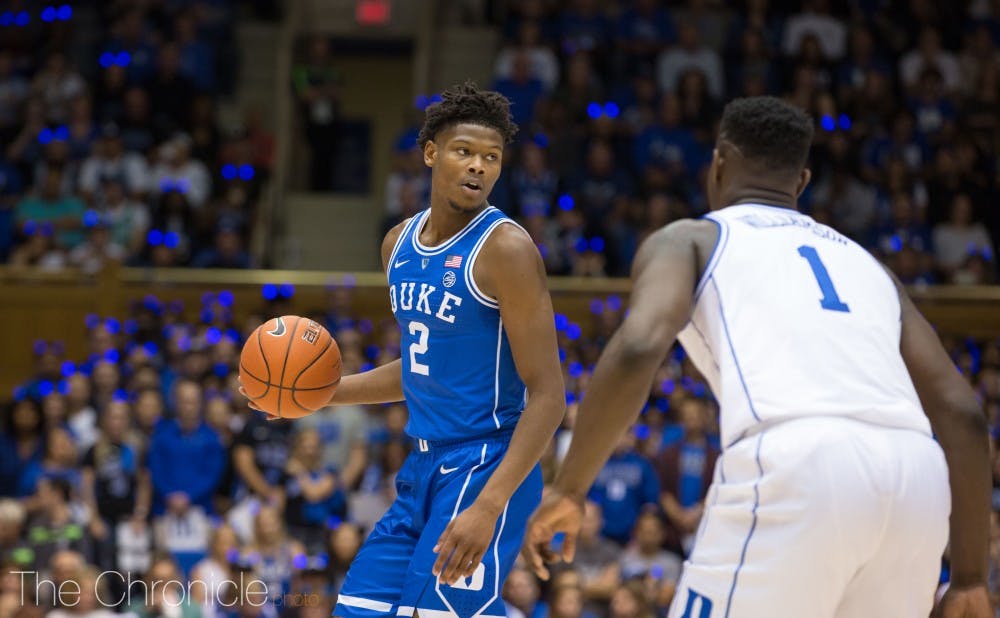The NBA is trying to have it both ways, giving elite high schoolers an opportunity to make money right away while still keeping them off their teams, and the half-baked solution the league came up with last week will fall flat.
ESPN's Jonathan Givony reported Thursday that the NBA's G League will offer $125,000 one-year select contracts starting this summer to 18-year-old prospects who are not yet eligible for the NBA Draft and would otherwise likely go to college for one year before jumping to the pros. That's a lot of money for most ordinary 18-year-olds, but with millions of dollars likely awaiting most top-10 recruits if they take the safer one-and-done route, why not stick with what works?
Let's assume we live in a fantasy world where every school abides by NCAA rules. This might not be far from the truth—I think it's far more likely than not that established bluebloods like Duke, Kentucky or North Carolina don't have to pay players under the table to play. But if I were a big-time recruit doing a mental cost-benefit analysis, I'd still decide that a year in college is worth more than $125,000.
Seven of the top 10 recruits in ESPN's Class of 2019 next season remain uncommitted to a college. They could choose an unknown path that guarantees them $125,000 but nothing more. Or they could choose the path that funnels players like them into the top quarter of the NBA Draft the vast majority of the time.
Eight of the top 10 players in ESPN's 2017 rankings were selected in the lottery in June after one year of college—the other two were Blue Devils Gary Trent Jr. and Trevon Duval. Maybe they would still have been picked that high if they spent the year in the G League, but maybe playing under an inexperienced coach in an environment that NBA scouts are less familiar evaluating would sink their draft stock. Why risk your likely windfall of several million just for a one-time $125,000 check?
The main attraction of college is top-tier coaching and accumulated knowledge of the game that a player wouldn't get in the G League. Mike Krzyzewski was introduced as Duke's head coach on March 18, 1980, before more than half of the G League's 27 head coaches were even more. Roy Williams, John Calipari, Tom Izzo and Bill Self are all national champions who have seen their fair share of players become lottery picks. I'd expect anybody in that group to do a better job of preparing a player for the NBA than a 35-year-old in his first-ever year as a head coach on a G League bench.
The highest level of college basketball also has more superficial perks—charter flights, full stadiums and constant exposure on ESPN, instead of long bus rides between two remote locations that are frequent in the G League.
Of course, those luxuries are all available in the NBA, too, where the top coaches are also every bit as good or better than the best coaches in the college game. That's where top high schoolers should be allowed to end up whenever they want. This debate will probably end in the next few years when that door opens, though it's taking too long, since NBA teams that have kept the one-and-done rule in place for more than a decade are reluctant to take on the extra work and risk that goes into evaluating high-school talent.
I'm not claiming that going to college means taking the moral high ground and embracing the concept of amateurism the NCAA tries to promote, and I won't judge players for making a different decision that might be best for them. But from a pure business perspective, the G League alternative wouldn't be good enough for me.
Get The Chronicle straight to your inbox
Signup for our weekly newsletter. Cancel at any time.

